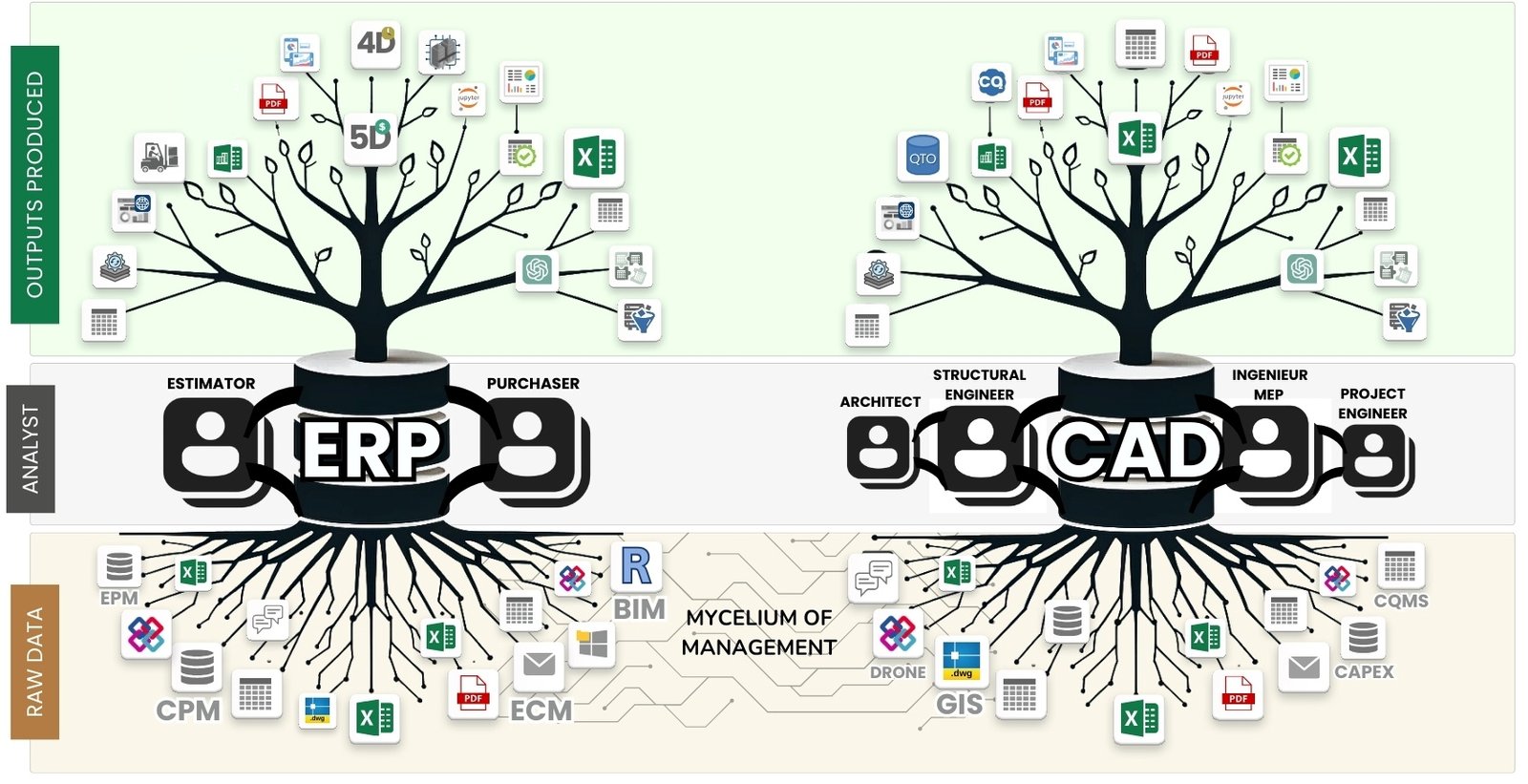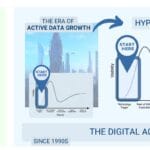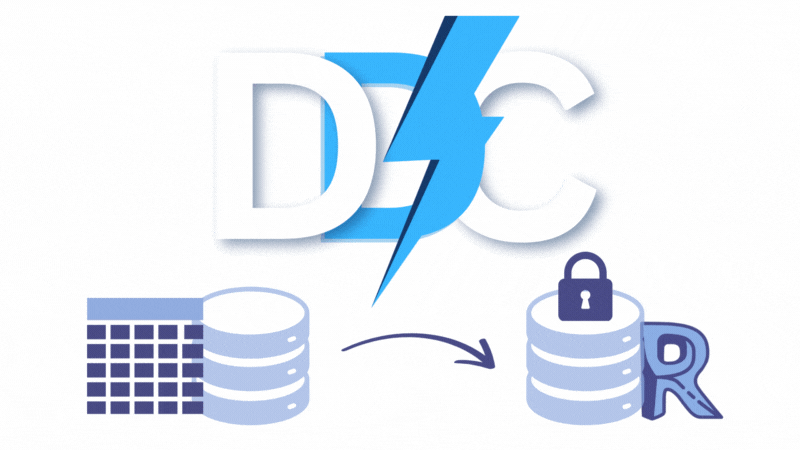The process of integrating data into applications and databases relies on the aggregation of information from a variety of sources, including different departments and specialists (Fig. 1.2-4). Specialists search for relevant data, process it, and transfer it to their systems and applications for further use.
Each company system, consisting of a set of tools, technologies and databases, is a knowledge tree rooted in the soil of historical data and growing to bear new fruit in the form of ready-made solutions: documents, calculations, tables, graphs and dashboards (Fig. 1.2-5). The systems in a company, like trees in a particular patch of forest interact and communicate with each other, representing a complex and well-structured system, supported and managed by expert managers.
A company’s information retrieval and transfer system works like a complex forest network consisting of trees (systems) and mycelium mushrooms (managers) that act as conductors and recyclers, ensuring that information is transferred and flows to the right systems. This helps to maintain a healthy and efficient flow and distribution of data within the company.
Experts, like roots, absorb raw data at the initial stages of a project, turning it into nutrients for the corporate ecosystem. Data and content management systems (Fig. 1.2-4 – ERP, CPM, BIM, etc.) act as powerful information highways through which this knowledge circulates through all levels of the company.
As in nature, where each element of the ecosystem plays its own role, in a company’s business landscape, each process participant – from engineer to analyst – contributes to the growth and fertility of the information environment. These systemic “data trees” (Fig. 1.2-5) are not just mechanisms for gathering information, but a competitive advantage that ensures a company’s sustainability.
Forest ecosystems are a surprisingly accurate reflection of how digital corporate structures are organized. Like the tiered structure of a forest – from the undergrowth to the treetops – corporate governance categorizes tasks by levels of responsibility and functional departments.
Deep and branching tree roots provide resilience and access to nutrients. Similarly, a strong organizational structure and stable processes for working with quality data support the entire information ecosystem of a company, contributing to its sustainable growth and development even during periods of (high wind) market instability and crises.

The modern understanding of scale in business has evolved. Today, the value of a company is determined not only by its visible part – the “crowns” in the form of final documents and reports – but also by the depth of the “root system” of qualitatively collected and systematically processed data. The more information can be collected and processed, the higher the business value becomes. Companies that methodically accumulate a “compost” of already processed data and are able to extract useful insights from it gain a strategic advantage
Historical information is becoming a new kind of capital, enabling growth, process optimization and competitive advantage. In a data-driven world, it’s not who has more, but who knows more that wins.
For the construction industry, this means moving to real-time project management, where all processes – from design and procurement to contractor coordination – will be based on relevant, daily updated data. The integration of information from various sources (ERP -systems, CAD -models, sensors IoT on construction sites, RFID) will make it possible to make more accurate forecasts, react quickly to changes and avoid delays caused by the lack of up-to-date data.
According to the Data-Driven Enterprise 2025 study (McKinsey & Company®,2022 (Mckinsey, “The data-driven enterprise of 2025,” 28 Jan. 2022)), successful companies of the future will rely on data in all key aspects of their operations, from strategic decisions to operational interactions.
Data will cease to be just an analytics tool and will become an integral part of all business processes, providing transparency, control and automation of management. Data-driven under move will allow organizations to minimize the influence of human factor, reduce operational risks and increase transparency and efficiency of decision-making.
The 21st century is turning the economic paradigm upside down: whereas oil used to be called “black gold” for its ability to power machinery and transportation, today, compressed under time pressure, historical data is becoming a new strategic resource, powering not machines but decision-making algorithms that will drive business.





















